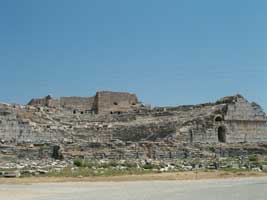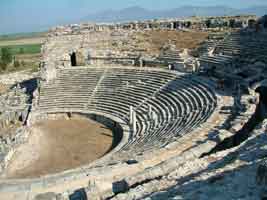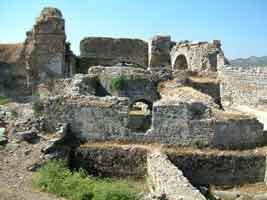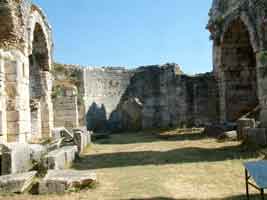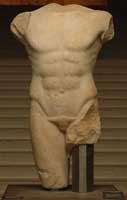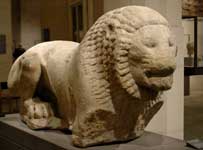.
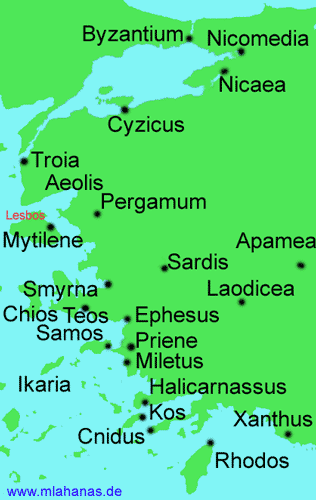
A high resolution Plan of Miletus
Miletus was an ancient Ionian Greek city on the western coast of Anatolia, in the Aydin Province of Turkey, near the mouth of the Maeander River. The site was inhabited since the Bronze age. It is first mentioned in Hittite records as Millawanda. In the time of hittite king Mursili II (ca. 1320 BC), Millawanda became a bridge-head for the expansion of the mycenaean Greeks (Achaia/Ahhijawa) in Asia Minor. In Greek mythology, Miletus was the founder of the city described below. He had two children: Caunus and Byblis.

The byzantine castle, right the Faustina Baths. In the backround ein mountain region in antiquity knwn as Mykale. 2003 Image by I. Panteleon.
It was once one of the twelve Ionian cities of Asia Minor. Its gridlike layout, planned by Hippodamos, became the basic layout for Roman cities. The city also once possessed a harbor, before it was clogged by alluvium brought by the Meander.

Market Gate of Miletus, Berlin Pergamon Museum, Photo: Michael Lahanas
The history of Miletus reaches back to the bronze age. Scholars have generally agreed that the Anatolian city Milawata mentioned in Hittite records should be identified with Miletus. In the 1500s BC, settlers from Crete moved there. In the 6th century BC, Miletus had become a maritime empire, having founded several colonies. It was under Persian rule until 479 BC, when the Greek became victorious over the Persians. During this time several other cities were formed by Milesian settlers, spanning across what is now Turkey and even as far as Crimea.

Miletus, view from the Byzantine castle to the theater in the center of the Hellenistic-Roman city. Image 1997 I. Panteleon.
Miletus was an important center of philosophy and science, producing such men as Thales, Anaximander and Anaximenes.
In 334 BC, the city was conquered by Alexander the Great.
The New Testament mentions Miletus as the site where the apostle Paul met with the elders of the church of Ephesus before his capture and travel to Rome for trial, as well as the city where Trophimus, one of Paul's travelling companions, recovered while sick.
- Vanessa B. Gorman: Miletos, the ornament of Ionia : a history of the city to 400 B.C.E.. Ann Arbor 2001. ISBN 0-472-11199-X
- Alan M. Greaves: Miletos : a history. London 2002. ISBN 0-415-23846-3
Links
Ancient Coins of Miletus (http://rjohara.net/coins/)
| Ancient Greece
Science, Technology , Medicine , Warfare, , Biographies , Life , Cities/Places/Maps , Arts , Literature , Philosophy ,Olympics, Mythology , History , Images Medieval Greece / Byzantine Empire Science, Technology, Arts, , Warfare , Literature, Biographies, Icons, History Modern Greece Cities, Islands, Regions, Fauna/Flora ,Biographies , History , Warfare, Science/Technology, Literature, Music , Arts , Film/Actors , Sport , Fashion --- |
Retrieved from "http://en.wikipedia.org/"
All text is available under the terms of the GNU Free Documentation License


